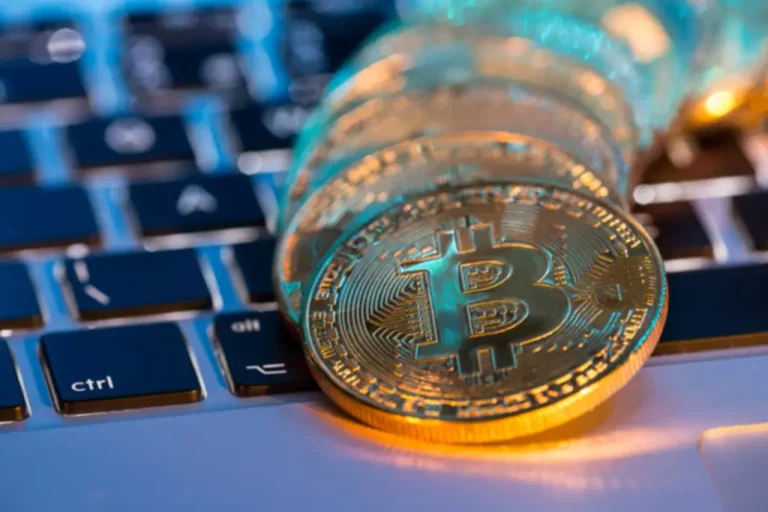The term liquidity provider is a generic term and can be used differently on a different platform. The content published on this website is not aimed to give any kind of financial, investment, trading, or any other form of advice. BitDegree.org does not endorse or suggest you to buy, sell or hold any kind of cryptocurrency. Before making financial investment decisions, do consult your financial advisor. You should also be aware of projects where the developers have the authority to change the regulations of the pool. Such developers can have privileged access within the smart contract code, like an admin key.
He is a CFA charterholder as well as holding FINRA Series 7, 55 & 63 licenses. He currently researches and teaches economic sociology and the social studies of finance at the Hebrew University in Jerusalem. TVL is an important metric for DeFi protocols because it provides investors with an indication of a platform’s overall what is liquidity mining liquidity. Liquidity pools play an important role in blockchain borrow-lend protocols, yield farming, on-chain insurance, and gaming protocols. The lender will deposit his DAI tokens and would receive cTokens which in this case would be cDAI. CTokens can be understood as a receipt of DAI tokens deposited by the lender.
This can enable them to do something malicious, like seize control of the funds in the pool. Consider yourself a trader who wishes to invest $20,000 in a BTC-USDT liquidity pool by using SushiSwap. Fees are distributed according to the proportion of liquidity that each provider has contributed to the pool.
Just upload your form 16, claim your deductions and get your acknowledgment number online. You can efile income tax return on your income from salary, house property, capital gains, business & profession and income from other sources. Further you can also file TDS returns, generate Form-16, use our Tax Calculator software, claim HRA, check refund status and generate rent receipts for Income Tax Filing. In this guide, we will delve into what commodities are, the reasons to invest in them, their risks and advantages, and the most po… Decentralised finance (DeFi) is a movement that aims to disrupt the current traditional… Apart from all the above, there are many use cases in decentralized insurance, voting, etc…which we will discuss in detail in some other articles.

Liquidity pools are the basis of automated yield-generating platforms like yearn, where users add their funds to pools that are then used to generate yield. Liquidity pools are used to facilitate decentralized trading, lending, and many more functions we’ll explore later. Further, traders use Uniswap to buy or sell crypto tokens, and in exchange for that, Uniswap charges a trading fee. Uniswap distributes this trading fee to its Liquidity Providers as a reward for providing liquidity to the platform.
- This can happen by either a buyer bidding higher or a seller lowering their price.
- Unlike traditional finance, which pairs buyers and sellers to complete a transaction, liquidity pools do not need to connect users to complete a trade.
- In addition, liquidity pools are a very important aspect of many crypto concepts, such as automated market makers (AMMs), on-chain insurance, and borrow-lend protocols.
- Cash is universally considered the most liquid asset because it can most quickly and easily be converted into other assets.
This model is great for facilitating efficient exchange and allowed the creation of complex financial markets. The most liquid stocks tend to be those with a great deal of interest from various market actors and a lot of daily transaction volume. Such stocks will also attract a larger number of market makers who maintain a tighter two-sided market. In the example above, the rare book collector’s assets are relatively illiquid and would probably not be worth their full value of $1,000 in a pinch. In investment terms, assessing accounting liquidity means comparing liquid assets to current liabilities, or financial obligations that come due within one year. In other words, liquidity describes the degree to which an asset can be quickly bought or sold in the market at a price reflecting its intrinsic value.
Liquidity providers can earn income and the governance token of the particular protocol (if available). The governance token allows holders to have voting rights related to network governance and the development of the AMM protocol. Liquidity providers are also motivated by some protocols, as the protocols offer financial gains derived from trader’s transaction fees.
On top of that, if a user wants to make only a single trade they would have to move their funds in and out of the 2nd layer which adds 2 extra steps to their process. Before we explain how liquidity pools work under the hood and what automated market making is, let’s try to understand why we even need them in the first place. DEXs are powered by Automated Market Maker (AMM) systems that leverage liquidity pools to autonomously match and execute market orders. They have aided its expansion from a small hobby to rival what traditional finance offers. One of the first decentralized exchanges to introduce such a system was Ethereum-based trading system Bancor, but was widely adopted in the space after Uniswap popularized them. If you provide liquidity to an AMM, you’ll need to be aware of a concept called impermanent loss.

A limited number of open orders would mean that a market has low liquidity, which results in price swings that make asset prices unpredictable and unattractive. Moreover, DEXs reward users who invest in liquidity pools, ultimately boosting customer engagement. Commonly used in centralized exchanges, the order book model is employed to pair buyers and sellers.

Blockchain oracles are third-party services that provide smart contracts with external information. Liquidity mining has been the popular way for crypto investors or traders to put their crypto to work, in earning passive income. Buyers are interested to buy any stocks/cryptos for the lowest price possible, while seller tries to get the maximum price for their stocks or crypto. Now, these trades get locked in the order book, where the consensus on price is required from both parties to get the trade executed. The order book is like an electronic record of buy and sell orders for specific security, cryptocurrency token/coin, or financial instrument organized by price level.
What is a Liquidity Pool in DeFi? How It Works & Why It Matters – Techopedia
What is a Liquidity Pool in DeFi? How It Works & Why It Matters.
Posted: Thu, 31 Aug 2023 07:00:00 GMT [source]
Whether it’s a low cap cryptocurrency or penny stock, slippage will be a concern when trying to enter — or exit — any trade. Slippage is the difference between the expected price of a trade and the price at which it is executed. Slippage is most common during periods of higher volatility, and can also occur when a large order is executed but there isn’t enough volume at the selected price to maintain the bid-ask spread. And of course, like with everything in DeFi we have to remember about potential risks. Besides our standard DeFi risks like smart contract bugs, admin keys and systemic risks, we have to add 2 new ones – impermanent loss and liquidity pool hacks – more on these in the next articles.
You may, for instance, own a very rare and valuable family heirloom appraised at $150,000. However, if there is not a market (i.e., no buyers) for your object, then it is irrelevant since nobody will pay anywhere close to its appraised value—it is very illiquid. It may even require hiring an auction house to act as a broker and track down potentially interested parties, which will take time and incur costs. Before investing in a pool, liquidity providers should thoroughly research the platform in question and the pool itself.
It involves staying abreast of market changes, global events, or shifts in personal circumstances that might affect your financial health. Liquidity pool can also describe the intersection of orders that create price levels which, after reaching a certain threshold, can see the asset decide whether to follow the trend upward or downward. There is also a possibility of temporary loss when offering liquidity to an AMM. Such losses lead to a loss in dollar value compared to HODLing (buy and hold strategy). KAIDEX is built on KardiaChain and it is specially designed for fast and affordable transactions.